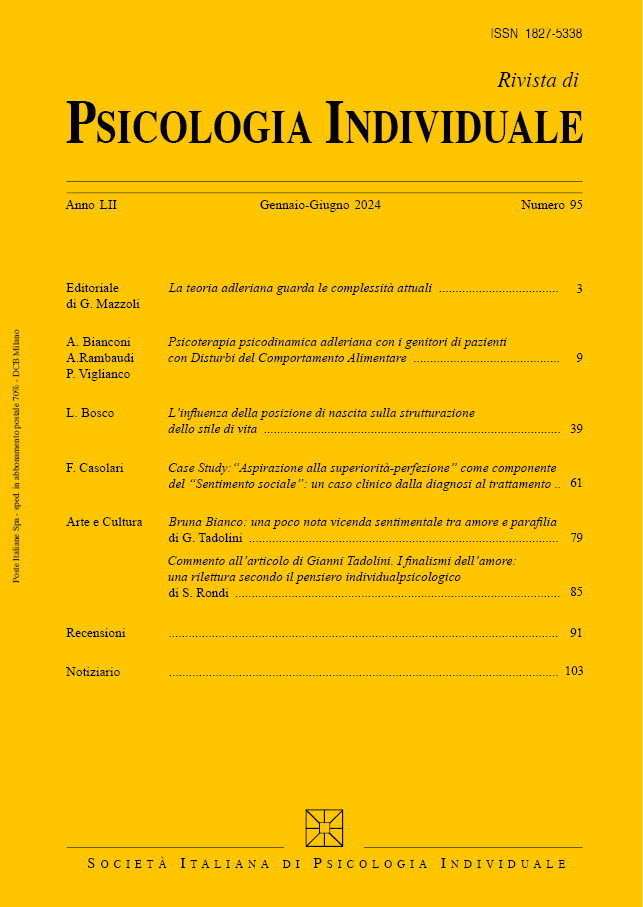FICTION AND COUNTER-ATTITUDE
Keywords:
transference / countertransference, fiction, emphatic communication, transfert, contro-atteggiamento, finzione, controtransfert, empatia, comunicazioneAbstract
In the theoretical-methodological Adlerian system, concepts of fiction, fictional goal, enhanced fiction, subtend the psychic development of the individual, the unfolding of his intrapsychic dynamism and of his possibility to be in relationship with other people. These concepts also subtend his psycho-pathological patterns and the stages of psychotherapeutic process. Recent neuro-scientific and psychotherapy process research have shown the full analyst’s role, together with the patient, to create and develop therapeutic alliance and relationship. The counter-attitude, in the current Adlerian meaning, shows the complexity of therapist’s transference and counter-transference movements towards the patient. The “functionality” of the counter attitude, represents a track of work for the therapist and for the therapeutic couple, for it is a path towards goals of changing, therapeutic goals, also fictional, as overviews on new possibilities of freedom for the patient. In the unfolding of therapeutic processes, therapist’s and patient’s fictional goals (both the evolutionary, going towards the projectable pole of the individual, and the psycho pathogen ones) intertwine with therapy’s purposes. For this reason, therapist’s attention will have to be constant, in order to make the fictionalizing of his own counter-attitude, functional towards therapy’s purposes, serving a possible and advantageous changing for the patient (oriented to the useful side of life).
The risk of iatrogenic effects can show up when the fictions of the therapeutic process are intertwined with an excessive methodological rigidity or, on the contrary, with an excessive emotionality of the meeting and when these fictions collude with the therapist’s needs, or with patient’s fictional goals, or fictional goals of both






